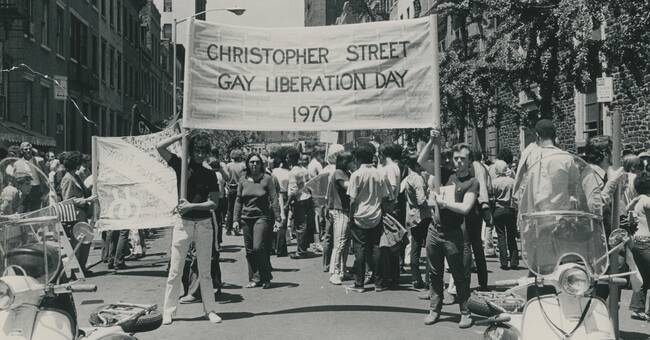1869:
Hungarian writer and political liberal Karl-Maria Kertbeny coined the term homosexual.
The purpose was to produce a more neutral word or expression without the negative associations that the words of the time - for example "sodomite" - were loaded with.
Homosexuality was then still banned in most countries.
1924:
The Society for Human Rights is founded in the United States as the country's first gay organization.
However, it was short-lived and disbanded only a few months later, but it is still seen today as a forerunner of the international gay movement.
1944:
Homosexuality between adults is decriminalized, and until then had been a crime in Sweden.
But that does not mean that homosexuality is accepted for that matter, but instead it is classified as a disease.
1950:
RFSL (Riksföreningen för sexuellt ligaberättigande) is formed as a Swedish branch of the Danish Association of 1948, which was formed two years earlier.
Allan Hellman, who in 1951 became the first to speak openly in the Swedish media about his homosexuality, took the initiative to found it.
In 1952, the group changed its name to RFSL and became its own organization.
1969:
The Stonewall Gay Bar in New York is stormed by police on June 28, but guests and owners strike back.
The subsequent uprising, which has come in the cold "Stonewall uprising", lasts for three days and will be crucial for large parts of today's LGBTQ movement in the United States and Europe.
1970: The
world's first Pride demonstration is held in New York as a memorial march on the Stonewall uprising a year earlier.
Up to 5,000 people (however, the number varies depending on the source) participated in the march, according to The New York Times some reported on the march on its front page.
1979: The
Swedish National Board of Health and Welfare deletes homosexuality from the list of diseases after demonstrations and the occupation in the same year of the National Board of Health and Welfare's stairs.
Director General Barbro Westerholm is the one who makes and writes on the decision.
1987:
Homosexual orientation (later changed to sexual orientation) is added to the list of prohibited discrimination.
1995:
The Registered Partnership Act enters into force.
It will then be seven years after the law on homosexual cohabitation came into force.
1998:
Stockholm Pride is arranged for the first time.
1999: The
law prohibiting discrimination in working life on the grounds of sexual orientation enters into force.
In the same year, the Ombudsman against Discrimination on the Grounds of Sexual Orientation, HomO, is also established.
2003:
Incitement against ethnic groups is expanded to include incitement with allusions to sexual orientation.
In the same year, same-sex registered partners also have the opportunity to be tried as adoptive parents.
The new law on non-discrimination also enters into force in a number of different areas.
2005:
Lesbian couples get the right to assisted conception, and the law prohibiting discrimination is extended to apply to the social sphere.
2009:
Same-sex marriage becomes legal on May 1, and on October 22 of the same year, the Church of Sweden votes to bless gay couples.
The Church's decision also includes the use of the word marriage.
2011:
An extended constitutional protection against discrimination linked to sexual orientation is introduced.
Sources: RFSL, Regeringen.se, Forum för levande historia, Svenska dagbladet, The New Yorker, The New York Times.

